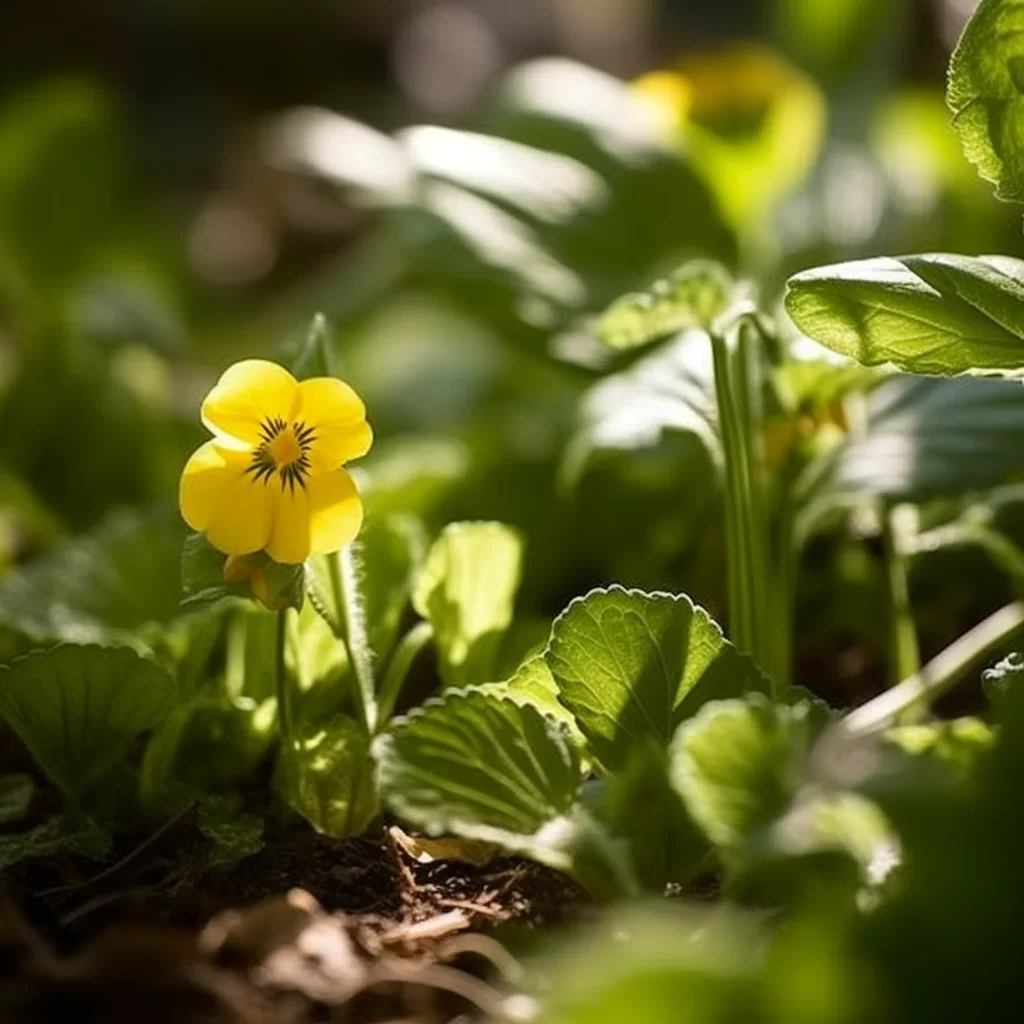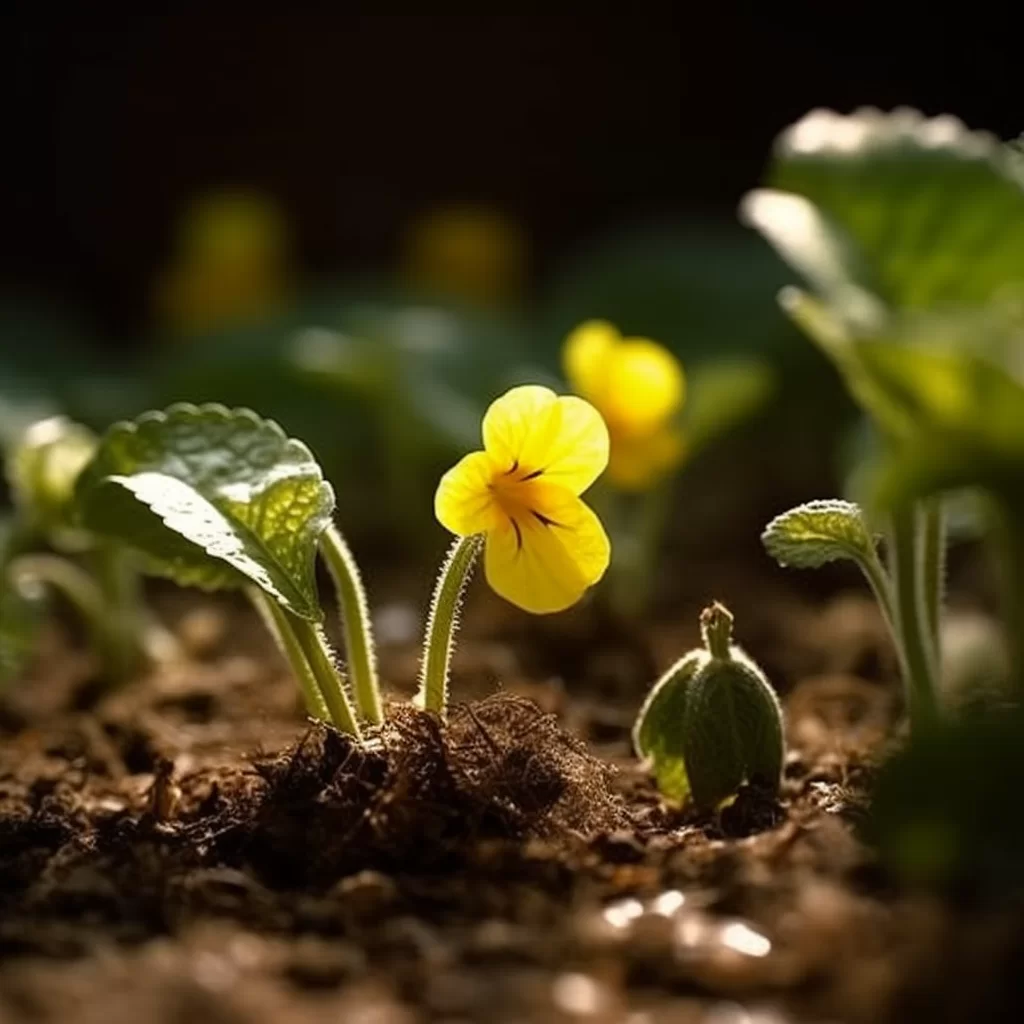Story of Day :
Contents
The Primrose Plant: A Complete Guide and Care Tips
Primrose plants are a great choice for gardeners who want to add some color and beauty to their garden.
They are known for their vibrant and eye-catching blooms, which come in a wide range of colors.
From bright yellows and oranges to soft pinks and purples, there is a primrose plant that will complement any garden palette.Aside from being visually appealing, primrose plants are also very low maintenance.
They have simple care requirements, making them an ideal choice for novice gardeners or those with busy schedules.
With this comprehensive guide, you’ll learn everything you need to know about the different types of primrose plants available and how to care for them properly so that they thrive in your garden all year round.
A Brief History of the Primrose Plant
The primrose, scientifically known as Primula vulgaris, is a charming plant that belongs to the family of Primulaceae.
Although it originated from Europe, it can now be found in various parts of the world.
Its name “primrose” comes from the Latin words “prima rosa,” which means “first rose.” This name perfectly suits this plant as it is one of the first flowers to bloom during springtime. The primrose’s vibrant and cheerful appearance makes it an excellent addition to any garden or home.
The primrose’s vibrant and cheerful appearance makes it an excellent addition to any garden or home.
Its delicate petals come in shades of pink, yellow, blue, and white that create a stunning display when they are in full bloom.
It is remarkable how this little flower has captured people’s hearts for centuries with its beauty and charm.
No wonder why poets have written about them throughout history! Whether you’re a seasoned gardener or just starting on your gardening journey, you can’t go wrong with adding these lovely plants to your collection.
Primroses, those delicate and colorful flowers that we often see in gardens and parks, have a long history that dates back centuries.
In fact, ancient civilizations like the Greeks regarded primroses as having medicinal properties that could cure paralysis.
With their unique ability to endure harsh weather conditions such as snow or frost, primroses were also believed to possess magical powers during medieval times, making them highly sought after by practitioners of traditional medicine.Over time, primroses have become an important part of our cultural heritage and are often associated with springtime and new beginnings.
Despite their delicate appearance, these vibrant flowers have proven to be quite hardy over the years thanks to their adaptation to various environments around the world.
So next time you spot a bed of primroses blooming amid the snow or frost – remember their storied past and appreciate the magic they continue to bring into our lives even today!
Types of Primroses

There are over 400 species of primroses with various colors ranging from white, yellow, pink, red or purple; some even have multiple colored flowers on one stem!
- English Primrose: This is one of the most common varieties with large single flowers available in pink,purple or white colors.
- Fairy Primrose: This variety has delicate clusters of small flowers that grow on long stems.
- Candelabra:This variety features tall spikes covered in many small blooms arranged like candles.
- Drumstick: This primrose has a unique shape, with round balls of flowers on top of tall stems.
They add a fun and playful element to any garden.
How to Care for Primrose Plants
Primroses are a delightful addition to any garden or indoor plant collection.
They have a reputation for being low-maintenance plants that require minimal attention, making them perfect for those who are new to gardening or simply don’t have much time to devote to plant care.
With just a few simple tips, you can keep your primrose healthy and thriving.Firstly, it’s important to make sure your primrose is getting the right amount of sunlight and water.
These plants prefer cool and moist conditions, so don’t let the soil dry out completely between watering sessions.
You can place them in a shady spot if you live in an area with hot summers.
Additionally, fertilizing once every month or so will help promote healthy growth.
Overall, caring for primroses is quite straightforward – they may be small yet charming but they’re tough little plants that will brighten up any space with their delicate blooms!

Sunlight Requirements
Primroses thrive in partial shade and prefer cooler temperatures between 45-65 degrees Fahrenheit. Make sure not to expose them to direct sunlight which can cause their petals or foliage leaves scorched.
Watering Requirements
The best way to water primroses is by keeping the soil moist but not soaked.
Overwatering can cause root rot while underwatering causes dehydration which leads the plant’s wilting or yellowing leaves.
Fertilization Requirements
You would need fertilizer only if the soil is lacking essential nutrients like nitrogen, phosphorus, and potassium. Fertilize your plants once every two weeks with half-strength liquid fertilizer during springtime when they’re growing vigorously but avoid fertilizing during summers when growth slows down.
Primrose plants are a popular choice for gardeners due to their stunning, vibrantly colored flowers.
However, like any other plant, primrose plants can be vulnerable to a variety of pests that can cause damage and eventually lead to the death of the plant.
Some common pests that attack primrose plants include aphids, slugs, snails, and spider mites. To protect your precious primrose plants from these pesky pests, there are several pest control measures you can take.
To protect your precious primrose plants from these pesky pests, there are several pest control measures you can take.
One effective method is using insecticidal soap or neem oil spray which helps in eliminating aphids and spider mites.
You could also sprinkle diatomaceous earth around your primroses as it acts as a natural barrier against slugs and snails whilst still being safe for humans and pets alike.
Regularly inspecting your plants for signs of infestation such as distorted leaves or wilted growth will help you identify problems early on before they become too severe.In conclusion, keeping your primrose plants free from harmful bugs is crucial if you want them to thrive in your garden.
By following these pest control measures regularly even before any infestation occurs will not only keep them looking beautiful but also ensure they remain healthy all year round!
Primroses are beautiful and delicate flowers that bring an elegant touch to any garden, but they can also attract pesky insects such as slugs, snails, aphids, and spider mites.
These pests can cause severe damage to the plants by feeding on their leaves and stems.
Fortunately, there are many natural ways you can keep these pests under control without resorting to harmful chemicals.
For example, you can use diatomaceous earth or copper tape around your primrose beds to prevent slugs and snails from reaching them.
Additionally, spraying your plants with a mixture of water and soap or neem oil can help get rid of aphids and spider mites.It is essential to avoid using pesticides in your garden as they may harm other beneficial insects like bees or ladybugs that play a crucial role in pollination.
Instead of relying on chemicals for pest control in your garden, consider using natural alternatives like biological controls such as nematodes or introducing predator insects like ladybugs that feed on aphids.
By adopting eco-friendly approaches to pest control practices for primroses in particular – which are susceptible to insect infestation – it’s possible to protect both the plants themselves while preserving other important elements of the ecosystem within which they exist.
- Natural predators : Encouraging natural predators like ladybugs into your garden helps keep aphids under control.
- Slug control: Reduce slug damage by placing sharp sand, eggshells or copper strips around your planters to stop slugs climbing up and feasting on your plants.
- Spraying Soap Solution: Mix a mild soap solution and spray it over the infested area to control spider mites.
Common Problems with Primrose Plants and How to Fix Them
Primroses are generally low-maintenance plants that can add a pop of color to any garden.
However, even with the best care, they can still encounter some problems that may need attention.
Luckily, identifying and fixing these issues is relatively easy if you know what to look for.
Some common issues that primrose gardeners may face include overwatering or underwatering, pest infestations such as aphids or slugs, and diseases like powdery mildew or root rot.
By carefully monitoring your primroses and taking proactive measures like adjusting watering schedules and using natural pest control methods, you can keep your plants healthy and thriving.If you’re considering growing primroses in your garden but are worried about running into problems with plant care, don’t be discouraged! While there are some common issues that may arise when caring for these lovely flowers, they’re typically easy to fix with a little bit of attention.
Common problems include over- or under-watering (which can lead to root rot or leaf wilting), pests like aphids or slugs eating away at the leaves and petals, fungal infections such as powdery mildew appearing on the foliage ,or other diseases affecting the roots such as crown rot.
With some careful observation and prompt action when needed (such as adjusting watering schedules or applying organic insecticides), it’s possible to keep your primroses in great condition all year round!
- Droopy Leaves :You may notice that your primrose leaves droop when the soil is too dry or the temperature is too high. Add more water regularly or move them somewhere cooler.
- Mold :If you see any mold growing around the base of your plant’s leaves or stems, remove infected parts immediately.</
- Powdery mildew :If the foliage appears dusty white, you might be dealing with powdery mildew.
Treat this problem by spraying an organic fungicide like neem oil every few days until it disappears.
To sum up, after analyzing all the evidence and arguments presented throughout this discussion, it can be concluded that there are several key factors to consider when evaluating the effectiveness of a particular approach or strategy.
These include the context in which it is being implemented, the goals and objectives it aims to achieve, and the resources available to support its implementation.In addition to these factors, it is also important to recognize that there may be multiple viable approaches or strategies depending on these contextual factors.
Ultimately, while no single approach may be universally applicable or guaranteed to succeed in every situation, a careful consideration of these various elements can help identify those most likely to produce positive outcomes and inform ongoing efforts towards continual improvement.
The Primrose plant is a wonderful choice for those seeking to add a touch of natural beauty to their garden without the hassle of high-maintenance plants.
With its vibrant, colorful blooms that last all season long, this plant is sure to bring joy and delight to any gardener.
What’s more, caring for a Primrose plant is easy and straightforward with just a few simple tips.
By following these guidelines, you can enjoy the full splendor of your Primroses while also preventing pests and tackling any issues that may arise.If you’re looking for an effortless way to add some magic into your garden, then consider adding some beautiful Primrose flowers.
With such an array of colors and shapes available, there’s bound to be one that catches your eye! Taking care of your plants is easy too – simply follow these helpful tips for optimal growth and bloom longevity.
By keeping pests away from your precious flowers while also addressing any challenges as they come up throughout the season, you can ensure that your garden stays healthy and radiant all year round!